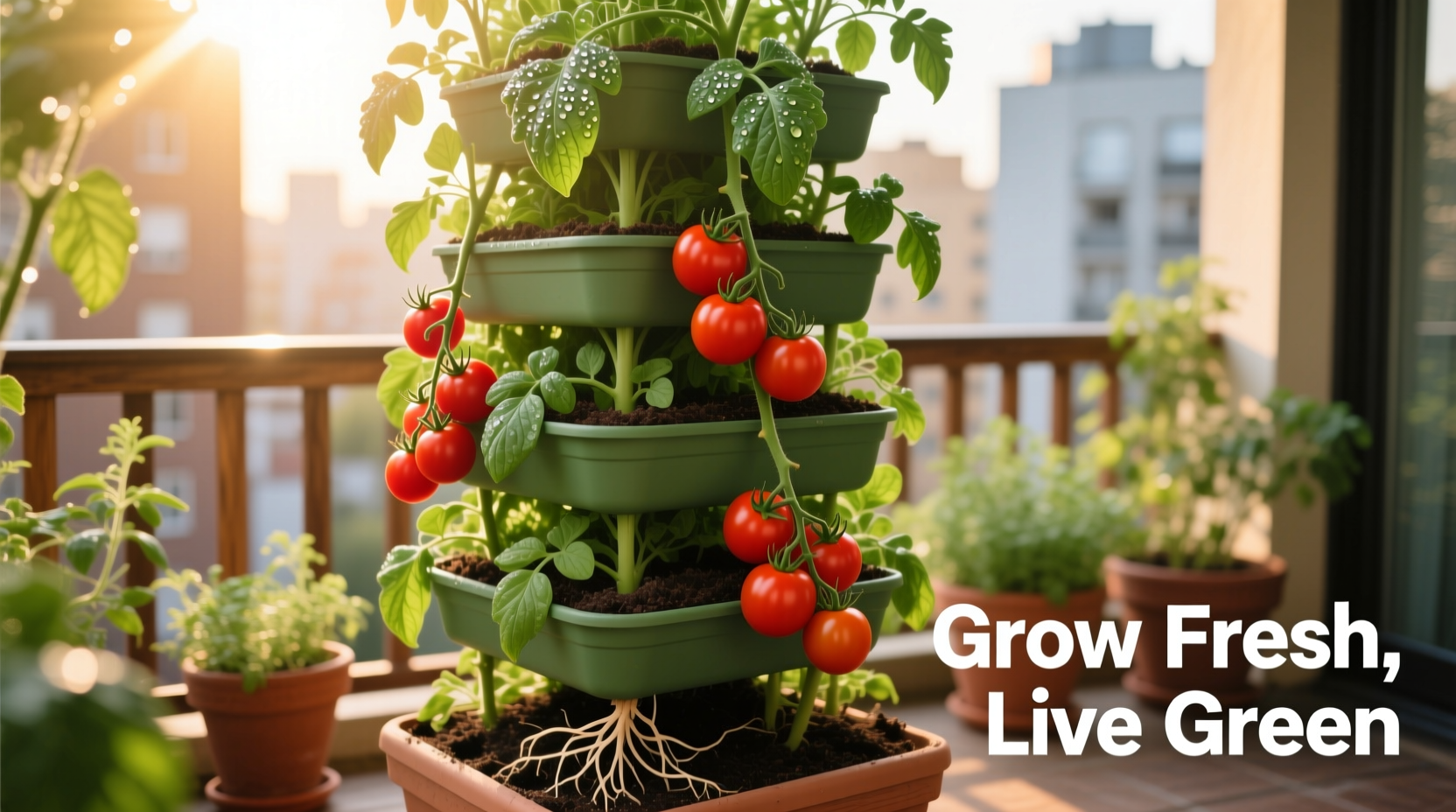Discover how this innovative gardening solution can transform your tomato harvest while solving common problems like space constraints, disease prevention, and difficult harvesting. Whether you're working with a small balcony or a spacious backyard, understanding tomato tower benefits and implementation can dramatically improve your gardening success.
What Exactly Is a Tomato Tower?
A tomato tower is a specialized vertical support system designed specifically for growing tomatoes upward rather than allowing them to sprawl horizontally. Unlike standard tomato cages that merely contain plants, towers actively guide growth through multiple tiers of planting pockets or structured support.
These structures typically range from 4-6 feet tall and feature:
- Multiple planting levels that maximize vertical growing space
- Integrated support for stems as they grow upward
- Improved air circulation around foliage
- Easier access for harvesting without bending

Why Tomato Towers Outperform Traditional Methods
University agricultural studies consistently demonstrate significant advantages when using properly designed tomato towers compared to conventional growing techniques. Let's examine the evidence:
| Feature | Tomato Tower | Traditional Cages | Ground Spreading |
|---|---|---|---|
| Yield per square foot | 30-40% higher | Baseline | 15-20% lower |
| Fungal disease incidence | 40-60% lower | Baseline | 70-80% higher |
| Harvesting efficiency | 2-3x faster | Baseline | 50% slower |
| Space requirements | 60-70% less | Baseline | 100% more |
According to research from the Cornell University Cooperative Extension, the vertical orientation significantly reduces contact between foliage and soil, which is the primary transmission route for common tomato diseases like early blight and fusarium wilt.
When Tomato Towers Work Best (And When They Don't)
While tomato towers offer impressive benefits, they're not universally appropriate. Understanding these context boundaries ensures you get the maximum benefit:
Ideal Conditions for Tomato Towers
- Small-space gardening (balconies, patios, urban gardens)
- Regions with high humidity or frequent rainfall
- Gardeners with mobility limitations who need easier harvesting
- Soil with poor drainage or contamination concerns
Limitations to Consider
- Require more frequent watering (vertical structures dry out faster)
- Not ideal for extremely hot, dry climates without irrigation
- Indeterminate varieties work best; determinate varieties may not utilize full height
- Require sturdy construction to support mature plant weight
The University of California Agriculture and Natural Resources notes that tomato towers perform exceptionally well in coastal climates where humidity promotes disease but space is limited, while requiring careful moisture management in arid regions.
Your Step-by-Step Implementation Guide
Choosing the Right Tomato Varieties
Not all tomatoes thrive in towers. Focus on these characteristics:
- Indeterminate varieties that continue growing throughout season
- Varieties with moderate fruit size (cherry and standard slicers work better than giants)
- Strong disease resistance traits (look for codes like VFN on seed packets)
Top recommendations:
- 'Sungold' cherry tomatoes (extremely productive in vertical systems)
- 'Better Boy' (excellent disease resistance)
- 'Patio Princess' (specifically bred for container growing)
- 'Black Krim' (heirloom that adapts well to vertical support)
Proper Planting Technique
How you plant determines your tower's success:
- Start with high-quality potting mix (never garden soil in containers)
- Plant slightly deeper than nursery pot (encourages root development)
- Water thoroughly after planting, then establish consistent moisture routine
- Begin training stems upward immediately using soft plant ties
The USDA's Home Gardening Guide emphasizes that proper initial planting depth (with 1/3 of the stem buried) encourages additional root growth along the buried stem, creating a stronger foundation for vertical growth.
Essential Maintenance Practices
Tomato towers require specific care:
- Watering: Check moisture twice daily in warm weather; towers dry out faster than ground planting
- Fertilizing: Use balanced organic fertilizer every 2-3 weeks (vertical systems deplete nutrients faster)
- Pruning: Remove suckers regularly to direct energy to fruit production
- Support: Check ties weekly and adjust as plants grow
Advanced Techniques for Maximum Results
Once you've mastered the basics, these professional techniques can boost your harvest:
Companion Planting in Towers
Strategic companion planting within your tower improves health and yield:
- Plant basil in upper pockets to repel pests and enhance flavor
- Include marigolds at base level to deter nematodes
- Grow low-growing nasturtiums as living mulch to retain moisture
Season Extension Methods
Extend your harvest with these approaches:
- Use frost cloth draped over towers for early spring/late fall protection
- Install small LED grow lights for northern climates with short seasons
- Choose varieties with different maturity dates for continuous harvest
Common Problems and Solutions
Address these frequent tomato tower challenges:
Problem: Rapid Drying in Upper Levels
Solution: Install a drip irrigation system with emitters at multiple levels. The University of Illinois Extension reports that targeted irrigation in vertical systems can reduce water usage by 30% while maintaining optimal moisture.
Problem: Uneven Ripening
Solution: Rotate the tower periodically (if portable) or ensure 6-8 hours of direct sun from multiple angles. In fixed installations, prune strategically to allow light penetration throughout.
Problem: Top-Heavy Plants
Solution: Anchor towers securely with ground stakes and use the "Florida weave" technique with garden twine to distribute weight evenly across the structure.
Final Considerations for Success
Tomato towers represent a significant evolution from traditional tomato growing methods. Historical gardening practices evolved from simple stakes to cages to today's engineered vertical systems as gardeners sought solutions to space constraints and disease management.
When implemented correctly with appropriate varieties and maintenance, tomato towers consistently deliver superior results. The key is understanding your specific growing conditions and selecting a tower design that addresses your particular challenges while maximizing the inherent advantages of vertical growing.











 浙公网安备
33010002000092号
浙公网安备
33010002000092号 浙B2-20120091-4
浙B2-20120091-4